In this week's NewsFlash, we'll hear how the Census of Marine Life found that the oceans are much more diverse than we thought and how fat cells behave differently in different parts of the body. Plus the smelly stories of the lily that smells like rotting fruit to attract flies, and how men really are sweatier than women!
In this episode
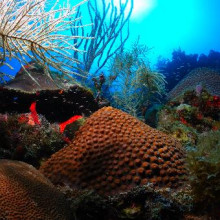
00:19 - The Census of Marine Life
The Census of Marine Life
Jesse Ausubel, the Sloan Foundation; Sylvia Earle
Helen - A major landmark in ocean science was reached in October 2010 with the completion of the world's first Census of Marine Life. It was 10 years in the making, involved hundreds of scientists all across the globe who joined forces to take on the enormous challenge of discovering as much as possible about the abundance, diversity, and distribution of life in the oceans. Sarah and I went along to a special conference in London that celebrated the achievements of the Census. To find out how the whole thing got started, we chatted to Jesse Ausubel from the Sloan Foundation about a very big idea he had a little over 10 years ago...
Jesse - On July 2nd, 1996, a deep sea expert named Fred Grassle said, "I think something big needs to be done for marine life, for marine biodiversity," and he said "obviously that's because over-fishing, pollution problems, but also because so much remains to be discovered."
He had published an estimate, that there might be between 1 and 10 million forms of marine life. And so I said, "Well Fred, give me a list of what's actually known today," and he was embarrassed.
He said, "I can't give you a list. We don't have one." And I said, "But people have been doing marine biology since Aristotle for 2,500 years. How come you'll not have a list? There must be a textbook with a list of all the forms of marine life" and he said, "Well, you know, the sponge people have their lists but they don't always agree with the corals people, and they don't talk to the anchovy people, and the anchovy people don't like the tuna people, and the tuna people don't like the shark people because sharks sometimes attack tuna..."
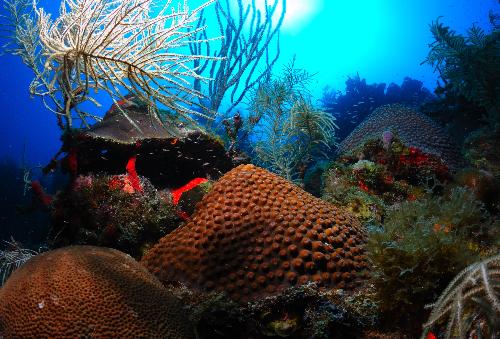 So, there's a lot of information but it's just not organised and most of the ocean is unexplored. So we talked for about an hour and a half, but the end of the hour and a half, we had the idea to have a big observational program in which we'd have hundreds of expeditions, and really try to get better, real information and observations, and Fred also had the basic idea and said, "But we have to have a common database, so the anchovy people and the sea star people, and the herring people can't all just go off in different directions, so we really want to know everything."
So, there's a lot of information but it's just not organised and most of the ocean is unexplored. So we talked for about an hour and a half, but the end of the hour and a half, we had the idea to have a big observational program in which we'd have hundreds of expeditions, and really try to get better, real information and observations, and Fred also had the basic idea and said, "But we have to have a common database, so the anchovy people and the sea star people, and the herring people can't all just go off in different directions, so we really want to know everything."
So, we both thought the idea was wonderful and we went off in separate directions and started talking to our colleagues about it. Most people said the idea is wonderful and most people said the idea is crazy. Some of them said it's romantic. Some of them said it's impossible, but no one said, "Don't try to do it." It made people somehow smile or laugh that we wanted to count all the fish in the sea.
So we had 3 whole years of feasibility studies during 1997, '98, '99. We did do our homework. We had lots of consultations. We wanted to make sure that the technology was powerful enough, we wanted to make sure that people would cooperate. We wanted to make sure that if we finished, as we've now done, that people would feel it was worthwhile. So, we had 3 years of feasibility studies. At the end of which, more people felt it was a great idea and some people still thought it was crazy. But fortunately, the people with the check book at the Sloan Foundation said, "Well we should take risks. That's why we're here. We're not like a federal government agency. We should take a chance on something." The president and the trustees of Sloan said, "We will support this program for 10 years, as long as it meets certain milestones."
And that's very important because if you talk to lots of Naked Scientists, you know that it's hard to get clothing for more than one year or two years at a time. It's very hard to get long term commitments. So the fact that one organisation, even though it couldn't provide all the money - in the end it provided 12% of the money - it said, we will be steady. We will provide basic support every year as you walk and talk to each other, coordinate, make your plans and if you do well, each year, we're just going to keep supporting you until you finish in 2010.
In 2000 we started organising and Fred's view was that we should get into the water quickly. We'd already had some years of feasibility studies but we said, with many programs - you write a plan and then you write a plan to write a plan to write a plan... And people spend 10 years planning and never get to the water or launch a rocket.
And so Fred said, "Let's start doing things right away!" Showing the kinds of work that we think should be done, and then try to attract people to the project by example rather than just inviting people to write documents. And so, we started right away, immediately in 2000, 2001 with some expeditions in which we try to again show that we were interested not only in the squid, but we we're interested and what lived on the bottom, and we were interested in sea birds, all of the different forms of marine life. And people became enthusiastic. In the end, almost everyone participated even though we never went out and dragged people in. It was a kind of voluntary Noah's Ark. So, the abyssal plains people, and the sea mounts people, and the reefs people, they just kind of started to come to us and say, "we want to be part of this" and it grew, and by 2004, 2005, we basically had all the different habitats and the different species represented.
Helen - And I can see by grin on your face that it's clearly a wonderful experience to be here, stood here 10 years down the line with your crazy, romantic, impossible project finished?
Jesse - It's been the best experience of my professional career and maybe the best experience of my life. I feel a little bit like an Olympic diver who chose a very hard dive and then you do the triple somersault and it worked, so I have a little bit of that feeling today. So I'm very proud. Of course, I'm proud because what we've done is important also because it's not easy being a fish these days and we should be a lot more sensitive about how we treat life in the oceans.
Helen - Jesse Ausubel, the co-founder of the Census of Marine Life, telling me, Helen Scales about how the whole grand project got started.
Sarah - We really did have a fantastic time at the Census Conference and not just because of lots of champagne. It was great to meet so many scientists who dedicated themselves to studying the ocean - from people using DNA bar-coding to indentify tiny critters, to those tracking the global migrations of ocean giants like sharks and whales, and we got to meet one of our absolute heroes, the legendary explorer, Sylvia Earle. Here's what she had to say about the Census.
Sylvia - It's been said several times and I'll say it again. This is a wonderful beginning. Ten years is a long time and it has set the stage for whatever follows. This really has stirred things up and makes it perfectly obvious that the great era may be the greatest era of exploration is truly just beginning.
Some think that it's all over, that we have to reach skyward to find new frontiers and of course, we can find them there. We need to do that, but mostly, we need to get to know this part of the universe. This part of the solar system, this place that keeps us alive. It's critical in terms of that great dream of human kind and that is to have peace. We cannot have peace among ourselves if we failed to have peace with nature, and we're not. Right now, we're not. We're cutting forests that have been growing for thousands of years. We're mining the ocean of its wildlife that has been developing for hundreds of millions of years, and I can forgive it only on the basis that people just don't know. They don't know and yet, we have the power of knowing and the Census of Marine Life has gone a long way toward putting things in perspective that not only have we just begun to get to know this ocean planet and to appreciate that our lives are dependent on the ocean and the creatures. It's not just rocks and water out there. It's a living system that gives us oxygen that grabs the carbon out of the atmosphere, that drives the food webs, drives not just the carbon cycle and the oxygen cycle, but the water cycles. It's where 97% of the water on the planet is and without the ocean, no rain, no water, no life. We absolutely are dependent. We are sea creatures, every bit as much as those magnificent numbers of individuals that the Census of Marine has been cataloguing and celebrating at this occasion.
Helen - That was the wonderful Sylvia Earle, pioneer of deep sea exploration. She's spent thousands of hours underwater and still holds the record for walking on the seabed deeper than anyone else. She ventured down 400 meters inside a diving suit called JIM back in 1979.
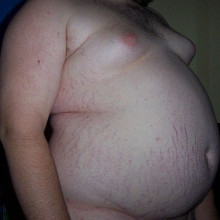
04:49 - Not all fat cells are created equal
Not all fat cells are created equal
Michael Jensen, the Mayo Clinic
Chris - This week, researchers have made another interesting finding in regard to what actually happens when a person puts on a bit too much weight. Now not all fat storing cells, which are known as adipocytes, are equal it seems and from the Mayo Clinic, to tell us more, Michael Jensen.
Michael - We were trying to understand why, when some people gain weight, they gain it in their hips and thighs which seems to protect from cardiovascular disease and other people tend to gain it in their abdominal area which seems to put them at higher risk.
Chris - So, in other words, this is the apples and pears analogy, isn't it? People who are very apple shape, they put all the weight on around the middle have a very different risk of being overweight than people who put their weight on around their bum.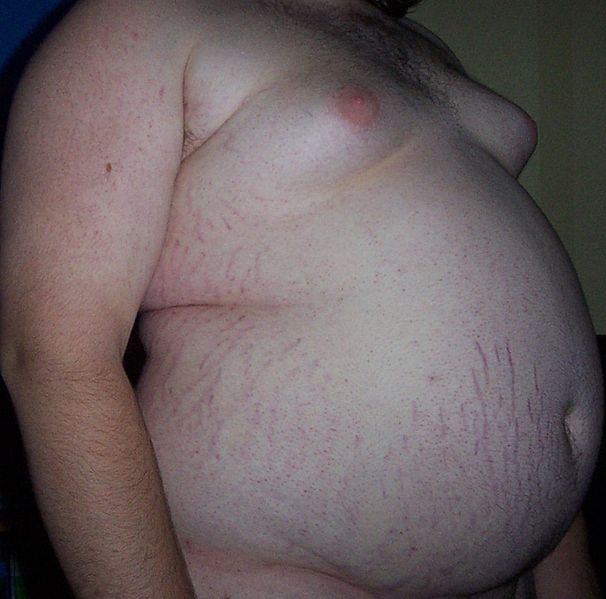
Michael - Yeah. That's what we were trying to find out. Is there something we can measure before you even gain weight that will predict where you're going to gain that weight? So we asked about 28 people who were normal weight, who'd never been overweight, and we're completely healthy to undergo some initial tests, including some fat biopsies, and then to really overeat for about 8 weeks to try to gain about 4 kilograms. And then the idea is to measure where they gain the fat and then to repeat the fat biopsies and see what had changed about their fat tissue.
Chris - So, by looking in the different zones in the body, you're asking: Do the fat cells change equivalently in the different anatomical zones, the abdomen versus around your hips for example? I guess to find out whether the cells there are behaving equivalently.
Michael - Yes, but also to see how they behave with regards to how much fat is gained in that area. So what we found is that the people who - when they gain weight in their abdomen, they gain it primarily by their fat cells getting bigger. When people gain weight in their hip and thigh area, their fat cells don't get bigger. They make more fat cells so that they keep their fat cell size on average, staying about the same. So the implication is, if you're putting weight on in the hip and thigh area, it's because you're creating new fat cells.
Chris - Well that flies in the face of what I guess doctors have been learning at medical school for many years, which is that after a certain age, you don't make any more fat cells. You just get fatter by making the ones you have got get bigger.
Michael - That's right and so that was what was so striking to us. This has completely overturned everything we've been taught.
Chris - Okay, so you've got this interesting finding. People put on increased numbers of cells around their hips. They have increasing size of cells in the abdomen. Where next? Where does this leave us?
Michael - Well, the other thing we found is that the people who did make more cells in their thighs were less likely to gain weight in the abdomen, suggesting that it may be the ability to create new fat cells in the hip and thigh area is one thing that might protect you from getting bigger cells in the abdominal area.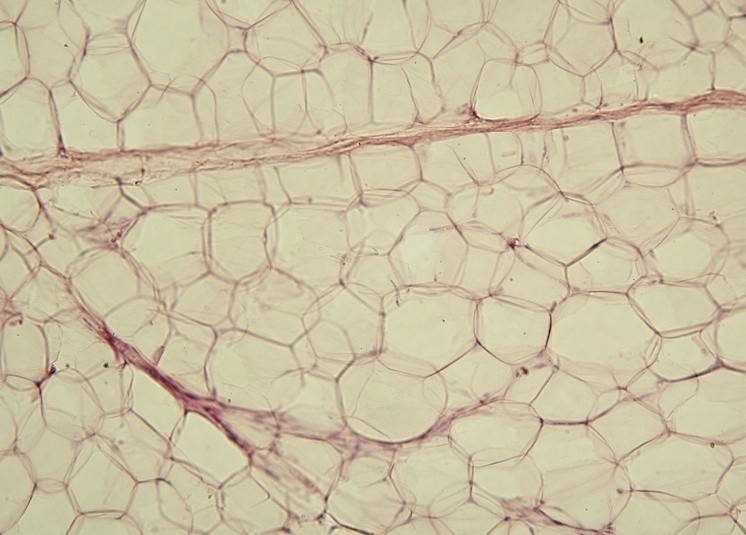
Chris - In other words, it's a word of sequestration process. If you're making new cells in your hips, you're not putting the fat around your middle which is the fat we know is associated with ill health.
Michael - Exactly, sort of the good news, bad news story. The bad news is you're making more fat cells which most people wouldn't want to do. The good news is that those fat cells are doing exactly the job you want them to do. They're having the fat stored benignly inside fat cells rather than going into bigger fat cells or worse yet, going into organs like liver and muscle where the fat can cause some insulin resistance.
Chris - So does this mean that one way we could tackle obesity and not just obesity, the linked condition diabetes which is of course much more common in people who gain too much weight? If we could find what is causing those cells to behave differently in those two areas and then in people who have a tendency to put weight on around the middle, we could make the fat instead be directed towards this less unhealthy distribution around the hips. Then we might have a way of reducing the risk of someone going on to develop an obesity linked disorder or disease.
Michael - Yes, that's exactly right. That's what we're hoping is that even if we can't prevent people from becoming obese which it doesn't seem we're having very good luck at, if we could at least prevent them from becoming ill as a result of the weight gain, that would be at least some accomplishment.
Chris - How close are you to being able to realise that, to being able to work out what is causing these cells to behave differently, not just in different bits of the body, but in different people?
Michael - Not as close as I would like to be, I'm afraid. I think the next steps are to begin looking much more closely at the pre-adipocytes, the precursors to fat cells in the different depots and specifically in people who we know already have gained weight preferentially in the hip and thigh area versus those who are not able to and look to see what is it about those cells that are different, and not just the mature adipocytes, but the pre-adipocytes.
Chris - Certainly food for thought, isn't it? That was Michael Jensen who is from the Mayo Clinic, and that work was published this week in the journal, PNAS.
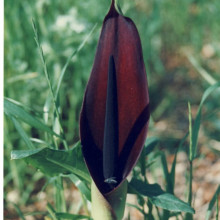
10:33 - Yeast-smelling lily tricks pollinating fruit flies
Yeast-smelling lily tricks pollinating fruit flies
This week, researchers led by Johannes Stökl have published a paper in Current Biology describing a flower that uses an unusual smell to attract its pollinators. The Solomon's Lily, which is a member of the Arum genus - which also contains the largest flower in the world, the Titan Arum - releases a sweet smell that mimics rotting or fermenting fruit to attract Drosophilid fruit flies.
 This lily uses what is known as deceptive pollination to trick the flies into pollinating it. Now, many flowers attract their pollinators - like insects, birds, bats, all sorts of animals - with some sort of reward - like a sweet sugary nectar. The pollinator visits the flower, and in the process of feeding on the nectar, pollen gets transferred to them that they then transfer to another plant.
This lily uses what is known as deceptive pollination to trick the flies into pollinating it. Now, many flowers attract their pollinators - like insects, birds, bats, all sorts of animals - with some sort of reward - like a sweet sugary nectar. The pollinator visits the flower, and in the process of feeding on the nectar, pollen gets transferred to them that they then transfer to another plant.
But obviously, it's quite costly to the plant to produce sweet nectar, so some plants trick their pollinators into pollinating them without giving a reward. They release smells that are similar to the food source, or breeding place of the insect, or sometimes even mimic the pheromones of the female insects to attract the males. And that's what this lily does - it mimics the smell of something that attracts the fruit flies.
So what the researchers did was that they analysed the volatile compounds released by the lily using Gas Chromatography and Mass spectrometry, and found that 6 of the 13 compounds that make up the smell are also found in rotting fruit and fermentation products like vinegar and wine, that are also very attractive to these fruit flies. Because Drosophilid fruit flies feed on yeasts and breed in rotting fruit, they have evolved to be sensitive to the odour of those things, and to respond to them.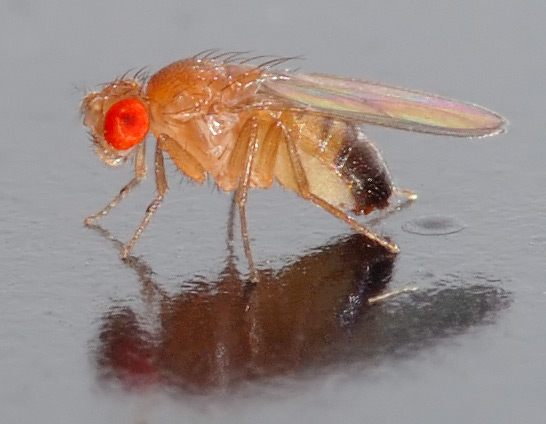
They also carried out functional imaging of the fly 'smell centre' - the antennal lobe - and found that the compounds released by the lily activate the same parts of the antennal lobe (which is like the olfactory bulb in our brains) as the smells of rotting fruit - so the lily is exploiting the fact that these flies have evolved to be very sensitive to these particular compounds in order to attract them. So it's interesting in two ways - from an evolutionary point of view, that the flower has evolved to so closely mimic the smell of rotting fruit, and from the point of view that it has helped to shed a bit more light on the way the fruit fly brain works and responds to particular smells.
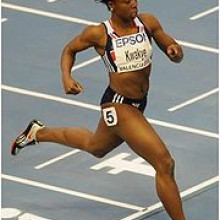
13:31 - Men Perspire, Women Glow, though more so if they exercise!
Men Perspire, Women Glow, though more so if they exercise!
Japanese scientists have confirmed the axiom that men sweat while women glow. Writing in the journal Experimental Physiology, Osaka International University researcher Yoshimoto Inoue and his colleagues measured the sweat production rates of a mixed group of 37 trained and untrained men and women as they underwent an hour-long exercise regime that had them working out at between 35% and 60% of their maximum workloads.The researchers also totted up the density of sweat glands on the subject's skins.
Men, they found, produced significantly more sweat than women, especially with increasing exercise intensity, and amongst both sexes exercise training augmented sweat gland activity, although much more so amongst males. The female study participants also became much hotter before they began to sweat maximally compared with either their trained or untrained male counterparts.
Apart from confirming the stereotype, the research sheds light on a number of outstanding questions regarding how the two sexes cope differently with temperature extremes. According to Inoue, "women generally have less body fluid than men and may become dehydrated more easily. Therefore the lower sweat loss in women may be an adaptation strategy that attaches importance to survival in a hot environment, while the higher sweat rate in men may be a strategy for greater efficiency of action or labour."
Next, the team plan to look at how hormones influence the process, based on the belief that testosterone is the driver behind mens' more prodigious sweat outputs, as well as accouting for why exercise training boosts sweat gland activity.










Comments
Add a comment